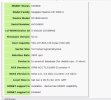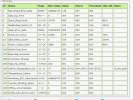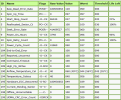Peso
Member
I have tried, on several occasions, to get my head around SMART HDD details. But they still look like Klingon to me.
My Dad wanted a third T2, in case one of the others died. Got one off eBay that optically looked alright.
Guided my parents through installing the CFW. Ran fixdisk.
All that came up was no lost+found folder, so created one at fixdisk’s suggestion.
Ran it a second time for good measure. Nothing came up and was done in less than 15 minutes.
That sounds good yes.
The overall SMART rating is passed. However when you look at the numbers “raw read error rate”, “seek error rate” and “hardware ecc recovered” all have high raw numbers.
Could someone please advise me if that is anything bad?
Many thanks for reading this.
My Dad wanted a third T2, in case one of the others died. Got one off eBay that optically looked alright.
Guided my parents through installing the CFW. Ran fixdisk.
All that came up was no lost+found folder, so created one at fixdisk’s suggestion.
Ran it a second time for good measure. Nothing came up and was done in less than 15 minutes.
That sounds good yes.
The overall SMART rating is passed. However when you look at the numbers “raw read error rate”, “seek error rate” and “hardware ecc recovered” all have high raw numbers.
Could someone please advise me if that is anything bad?
Many thanks for reading this.





